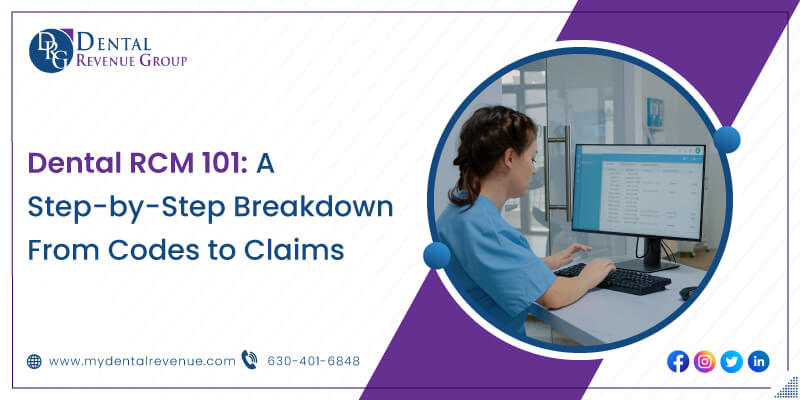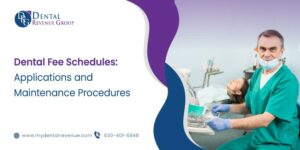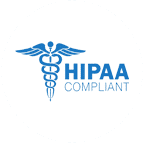An essential aspect of a successful dental practice is efficient revenue cycle management (RCM). Dental RCM involves various processes that ensure accurate coding, timely claim submission, and proper reimbursement from insurance providers. In this blog post, we will provide a step-by-step breakdown of the dental RCM process, from codes to claims.
An Overview Of Dental RCM
The importance of revenue cycle management (RCM) cannot be undermined. It plays a pivotal role in the financial stability of dental practices. Without effective RCM, the smooth functioning of these practices would be at risk. RCM extends far beyond mere patient billing. It is the intricate financial circulatory system that keeps a dental practice healthy. The process begins when a patient schedules an appointment and then follows the entire journey, concluding with the collection of provided service payments.
The heartbeat of dental practices heavily relies on reimbursements from payers. This reliance makes the role of RCM even more vital. It’s not just about keeping the lights on; it’s about meeting financial commitments, from settling accounts with suppliers to paying the dedicated staff. In essence, the significance of dental RCM is immeasurable. The invisible force maintains the financial well-being of dental practices, ensuring they can continue providing quality care while keeping their operations sustainable.
Step-By-Step Breakdown of the RCM Process
Here are the sequential breakdown steps of Dental Revenue Cycle Management (RCM).
Step 1: Patient Registration and Insurance Verification
The first step in dental RCM is patient registration and insurance verification. The front desk staff should collect accurate patient information, including personal details and insurance coverage. It is crucial to verify insurance coverage to avoid any claim rejections or delays later in the process.
Step 2: Treatment Planning and Coding
After patient registration, the dentist performs an examination and creates a treatment plan. Each dental procedure has a specific code, known as a Current Dental Terminology (CDT) code, assigned to it. The dentist must give the appropriate CDT code for each procedure performed during the treatment. Accurate coding ensures smooth claim processing and proper reimbursement.
Step 3: Fee Schedule and Charges
Once the treatment plan is finalized and coded, the next step is determining the fee schedule and charges. Dental offices typically have their fee schedules based on factors like location, expertise, and level of service. Ensuring that the costs align with the fee schedule is essential, as overcharging or undercharging can lead to claim denials or incorrect reimbursement.
Step 4: Claim Submission
After assigning the appropriate codes and determining the charges, the dental practice submits the claims to the insurance provider. Claims can be submitted electronically or on paper, depending on the insurance company’s preferred method. It is essential to double-check the claim for accuracy and completeness before submission to prevent unnecessary claim rejections.
Step 5: Claim Adjudication
Once the claim is submitted, it goes through a claim adjudication process. During this process, the insurance company reviews the claim for accuracy and determines the benefits payable based on the patient’s coverage. The adjudication process can take a few days to weeks, depending on the insurance company’s response time.
Step 6: Payment and Reimbursement
After the claim is adjudicated, the insurance company pays the dental practice. This payment can be an electronic funds transfer (EFT) or a paper check. The dental practice should reconcile the payment received with the expected reimbursement based on the fee schedule.
Step 7: Denials and Appeals
Sometimes, claims may be denied or partially reimbursed by the insurance company. In such cases, the dental practice can review the denial reason and evaluate if it can be rectified. The office may need to provide additional information or submit an appeal to the insurance company to reconsider the claim. Proper follow-up on denied claims is crucial to maximize reimbursement.
Step 8: Patient Responsibility and Collections
After insurance reimbursement, the dental practice determines the patient’s share of the treatment cost based on the insurance coverage and any deductibles or copayments. The front desk staff discusses the patient’s financial responsibility, collects payment, and provides them with a receipt and any necessary documents for reimbursement from their insurance if applicable.
How Dental RCM Addresses Common Business Challenges
Efficient Revenue Cycle Management (RCM) can significantly decrease denials for your dental practice. Unlike manual claims handling, a robust system can elevate your clean claims to 99%, slashing denials and optimizing your payer reimbursements. Here are ways Dental RCM tackles prevalent challenges faced by dental businesses.
Navigating Staffing Shortages
Dental businesses face challenges like staff shortages, but Dental RCM offers solutions. It centralizes administrative tasks across locations, preventing vulnerability from individual vacancies. With a consolidated team, tasks get managed efficiently, reducing the risk of operational disruptions due to sudden staff gaps.
Streamlining Processes
For effective revenue cycle management (RCM), streamlined workflows are essential. RCM helps dental businesses enhance their processes by standardizing them according to best practices. While this demands time and knowledge, RCM’s expertise ensures efficient management of revenue cycles.
Embracing Evolving Technology
Staying updated with the fast-changing dental technology landscape is tricky. Dental RCM services alleviate this challenge by leveraging cutting-edge technology platforms. These platforms heighten productivity, minimize manual tasks, and reduce errors that could adversely affect patient billing experiences.
5 Key Advantages of Partnering with Dental RCM Services
Boosted Efficiency
Partnering with dental RCM services streamlines your in-house team’s workload. RCM experts customize billing processes to enhance teamwork between them and your staff.
Enhanced Cash Flow
Dental RCM experts leverage their know-how and technology to optimize collections from insurance claims and patients. This results in increased revenue for your business.
Minimized Billing Errors
Continuous training equips RCM experts with dental billing best practices to reduce insurance claims errors and improve success rates in appeals.
Improved Patient Experience
By managing RCM, your team can prioritize crafting exceptional patient experiences. Administrative tasks no longer overwhelm them, enabling better patient care.
Strengthened Compliance
Your RCM partner understands your state’s insurance laws and regulations. Their expertise ensures that your dental practice remains compliant, bolstering your business’ integrity.
The Bottom Line
Effective revenue cycle management is necessary for healthcare success, even dental businesses. Learning the essentials and adopting top methods can boost revenue, enhance cash flow, and please patients. Choosing RCM services streamlines your journey. Collaborating with an RCM partner lets your team focus on top-notch patient care while your revenue cycle is expertly handled. Following these steps meticulously and staying up to date with coding and insurance guidelines will help dental practices streamline their revenue cycle management and enhance their overall financial health.











